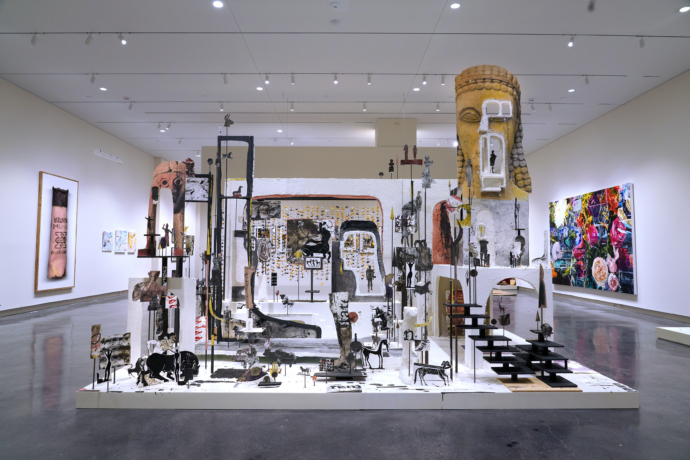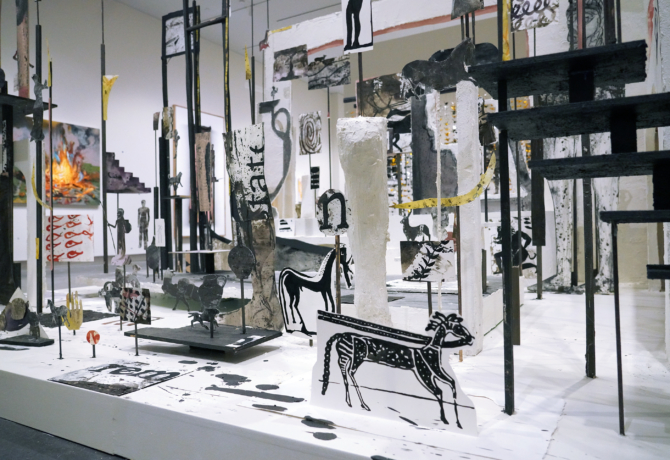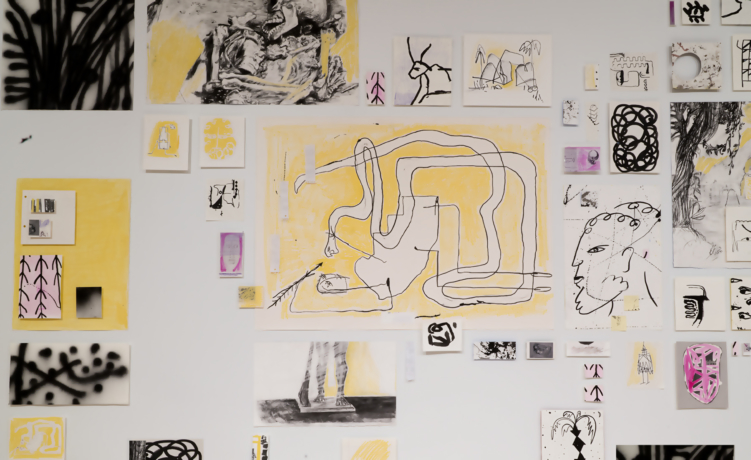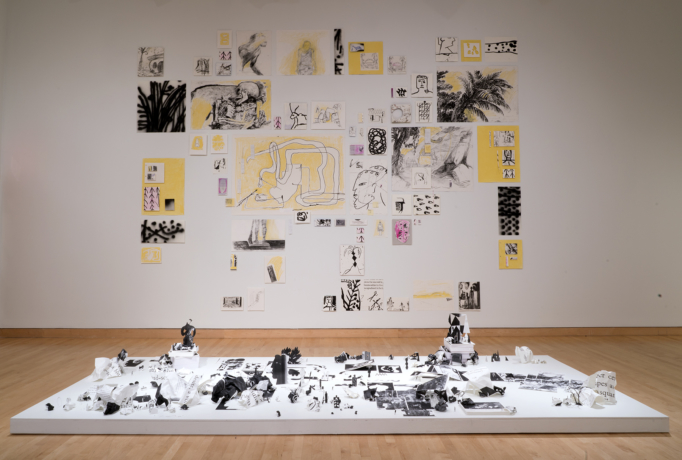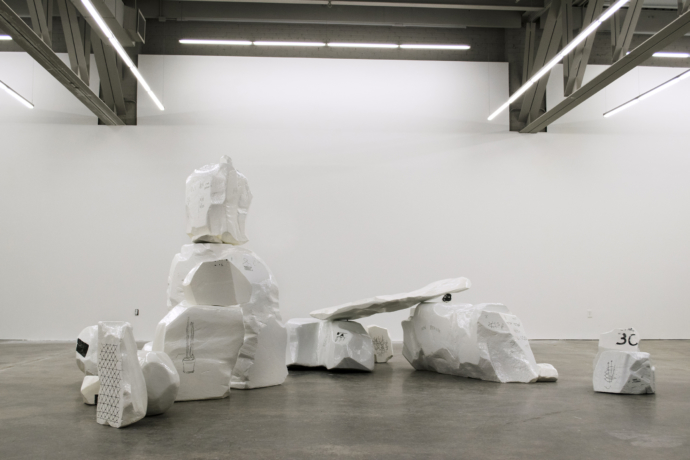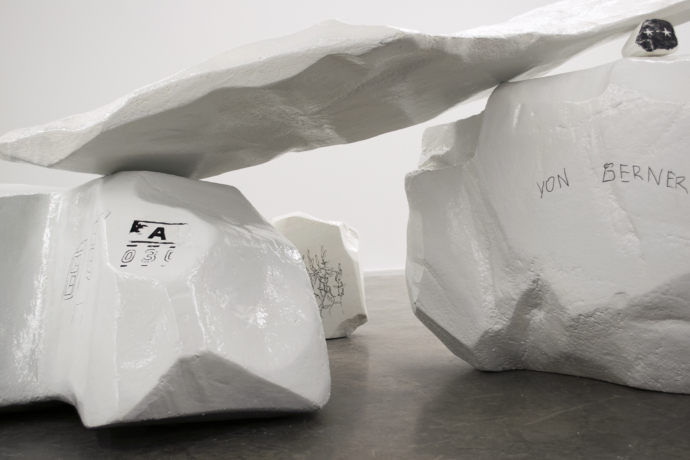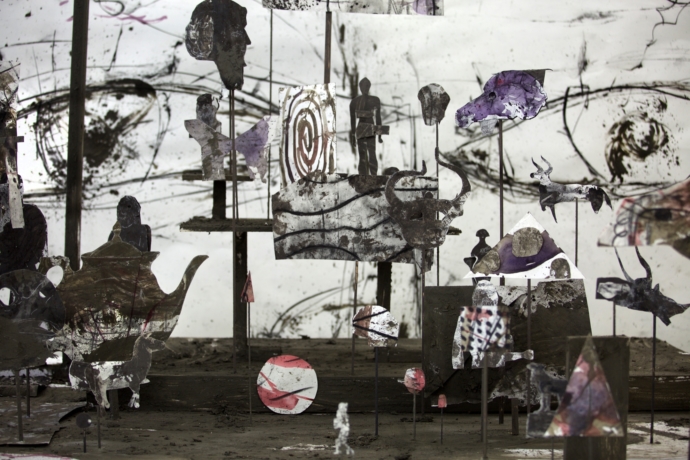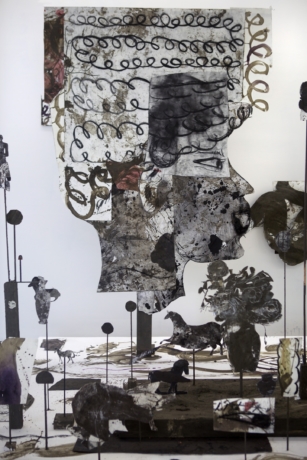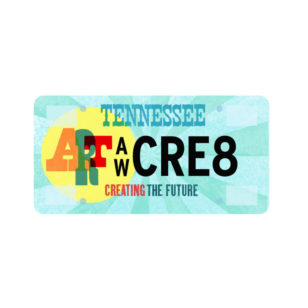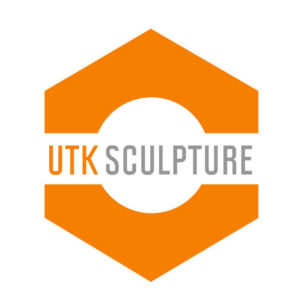ANDREW SCOTT ROSS
Website
CV
Tri-cities, TN | Sculpture, Mixed Media, Drawing, Installation
Bio:
Andrew Scott Ross received his BFA from the Atlanta College of Art and his MFA at the School of the Art Institute of Chicago. He subsequently studied at the Skowhegan School of Painting and Sculpture. Ross has exhibited throughout the United States and abroad including; the Museum of Arts and Design in New York, the Building for Contemporary Art in Geneva, Switzerland, The Museum of Contemporary Art of Georgia, The Guggenheim Museum's Peter Lewis Theater, the Ben Gurion Airport in Tel Aviv, Israel, the Knoxville Museum of Art, the Hunter Museum of American Art, the Weatherspoon Museum, John Michael Kohler Arts Center, and the Asheville Art Museum. His installation Century Zoo 10 was commissioned for the exhibit, Southern Voices / Global Visions organized by South Arts and ArtFields in 2023. In the summer of 2024, Ross’ wax drawings will be a part of the Delta Triennial at the Arkansas Museum of Fine Arts. His work has been reviewed in publications such as Artforum Magazine, Art in America, The New York Times, The New Yorker, Sculpture Magazine, and Artsy. Past awards include the Joan Mitchell Fellowship for MFA, The Tennessee Fellowship from the Center for Excellence in the Creative Arts, and the South Arts Fellowship for the state of Tennessee. Most recently, he received a 2022 Current Art Fund grant through Tri-Star Arts.
Statement:
I am interested in finding alternative methods of interpreting, recording, and visualizing history. Inspired by institutions such as The Metropolitan Museum of Art, The Smithsonian, and Wikipedia, which quixotically attempt to reflect all of cultural production, I have spent the past thirteen years investigating the logic of the encyclopedic museum. The results of these activities have taken the form of drawings videos, sculptures, and immersive environments – each work being different in material but consistently focused on the deconstruction of historical narratives; how truth relates to documentation; and how to reimagine the encyclopedic museum as a form of self-expression. My studio practice differs from most, in that many of the works I produce are never considered complete. They are exhibited multiple times, continually exposing their evolution as elements are added or mutated, and as parts are exchanged, sold or eliminated. This process of gradual transformation is similar to that which many museums undergo, as individual objects from the collection are circulated between display and storage. These shifting arrangements attempt to weave time and place while disrupting standard curatorial strategies such as chronological order or geographic specificity. Taxonomies and hierarchies are further broken down by exchanging “high” and “low” art materials, and intermingling human achievements with natural ones. Each time the works are shown the more this disruption and entropy take place; the power of individual objects is removed and we can begin to see cultural production more in mass (as a whole) and less in parts.
